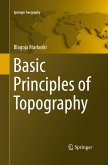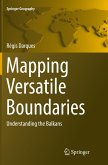
Broschiertes Buch
Softcover reprint of the original 1st ed. 2018
26. April 2019
GEOMAP, DOO / Springer / Springer International Publishing / Springer, Berlin
978-3-319-89148-4

Gebundenes Buch
1st ed. 2018
15. Februar 2018
GEOMAP, DOO / Springer / Springer International Publishing / Springer, Berlin
978-3-319-72146-0
eBook, PDF
18. Januar 2018
Springer International Publishing
Ähnliche Artikel

Gebundenes Buch
1st edition 2018
19. März 2018
Springer / Springer International Publishing / Springer, Berlin
978-3-319-73407-1

Gebundenes Buch
1991.
30. November 1991
Springer / Springer Netherlands
978-0-7923-1535-3

Broschiertes Buch
Softcover reprint of the original 1st edition 2019
31. Januar 2019
KEGA and VEGA / Springer / Springer International Publishing / Springer, Berlin
978-3-030-06773-1

Gebundenes Buch
1st edition 2019
23. August 2018
KEGA and VEGA / Springer / Springer International Publishing / Springer, Berlin
978-3-319-94017-5

Gebundenes Buch
1st edition 2019
6. August 2018
KEGA and VEGA / Springer / Springer International Publishing / Springer, Berlin
978-3-319-94020-5

Broschiertes Buch
Softcover reprint of the original 1st edition 2019
20. Dezember 2018
KEGA and VEGA / Springer / Springer International Publishing / Springer, Berlin
978-3-030-06774-8


Gebundenes Buch
Shaping the City with Gardens Through History
1st edition 2018
9. April 2018
Springer / Springer International Publishing / Springer, Berlin
978-3-319-72732-5

Broschiertes Buch
Understanding the Balkans
Softcover reprint of the original 1st ed. 2017
16. Juni 2018
Springer / Springer International Publishing / Springer, Berlin
978-3-319-82219-8
Ähnlichkeitssuche: Fact®Finder von OMIKRON
